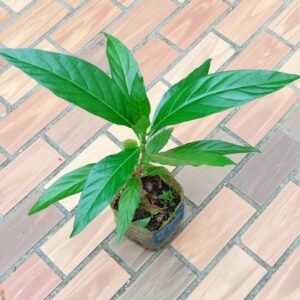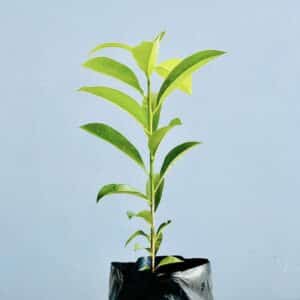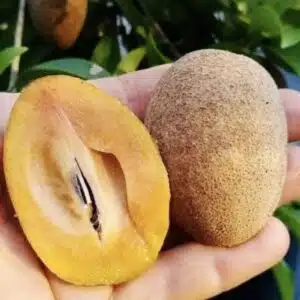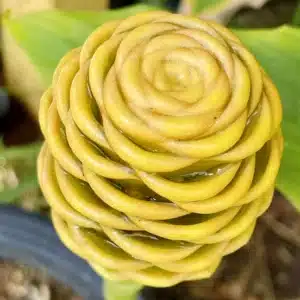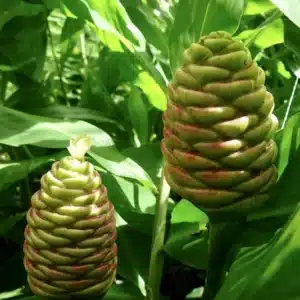Custard Apple (annona squamosa) Tropical Fruit Tree 10”-20”
The Custard Apple, also known as Annona reticulata, is a tropical fruit tree that produces a unique and delicious fruit with a creamy, custard-like texture. The tree is relatively easy to grow and care for, making it a great addition to any garden or orchard. In this description, we will discuss how to plant and care for Custard Apple trees, and some of the benefits they can provide.
An interesting fact about Custard Apple is that it has been used for centuries in traditional medicine to treat a variety of ailments. The fruit, leaves, and seeds of the Custard Apple tree contain a range of compounds that have been shown to have anti-inflammatory, anti-cancer, and anti-diabetic properties. The leaves of the tree have been used to treat fever, diarrhea, and dysentery, while the seeds have been used to treat parasitic infections and hypertension. In addition to its medicinal uses, Custard Apple is also used in various cultural practices around the world. In some parts of South America, for example, it is believed that the fruit has the power to bring good luck and ward off evil spirits. These traditional uses and beliefs highlight the important role that Custard Apple has played in human culture for thousands of years.
Grafted Sapodilla / zapote (manilkara zapota) tropical live fruit tree 12”-24”
Sapodilla, also known as Manilkara zapota, is a tropical fruit tree native to Central America and the Caribbean. It is valued for its sweet, juicy fruit that is often compared to caramel or brown sugar. In this description, we will discuss how to plant and care for sapodilla trees, and some of the benefits they can provide.
An interesting fact about sapodilla fruit is that it contains a natural latex that is used to make chewing gum. In fact, sapodilla was one of the original sources of chewing gum, and was prized by ancient Mayan and Aztec cultures for its sweet, chewy properties. The sapodilla latex is harvested by making cuts in the bark of the tree and allowing the sap to flow out and harden. The hardened sap is then collected and processed into a chewy, rubbery material that is used to make gum. Today, most commercial chewing gum is made with synthetic latex, but some specialty gum makers still use natural sapodilla latex to create a unique and flavorful chewing experience.
Pinecone ginger (Zingiber zerumbet) Ornamental Live Plant 10”-20”
Pinecone ginger, scientifically known as Zingiber zerumbet, is a tropical plant known for its striking cone-shaped flower heads and vibrant foliage. Native to Southeast Asia, this perennial plant adds a touch of exotic beauty to any garden or landscape. The flower heads, composed of colorful bracts, resemble miniature pinecones and attract butterflies and hummingbirds. The glossy, lance-shaped leaves contribute to its lush appearance. Pinecone ginger prefers partial shade and well-drained soil, requiring regular watering to keep the soil moist. Aside from its ornamental value, this plant holds traditional medicinal uses in some cultures. The rhizomes are believed to have anti-inflammatory and digestive properties. Pinecone ginger is a captivating addition to any tropical or subtropical garden, infusing it with its unique charm and delightful fragrance.


